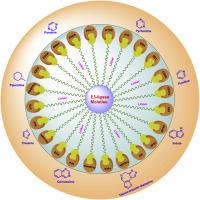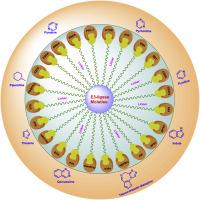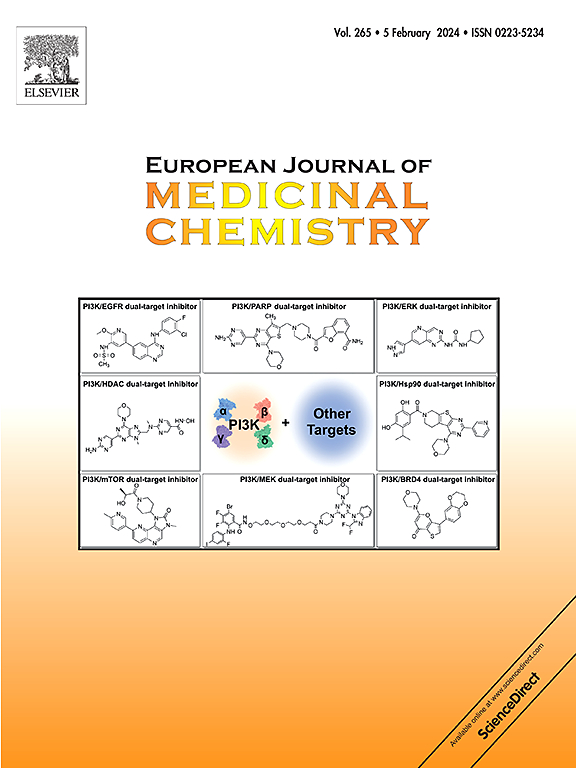新一代癌症疗法:PROTACs 和杂环弹头在靶向抗药性中的作用
IF 6
2区 医学
Q1 CHEMISTRY, MEDICINAL
引用次数: 0
摘要
癌症治疗持续有效的主要障碍之一是耐药性的产生。目前阻断与癌症进展相关的蛋白质的疗法往往会因获得性耐药性而失去疗效,而获得性耐药性往往是由突变或过度表达的蛋白质靶点驱动的。蛋白水解靶向嵌合体(PROTACs)通过劫持细胞的泛素-蛋白酶体系统来降解致病蛋白,提供了另一种治疗策略,具有多种潜在优势。在过去几年中,PROTACs 已开发出针对各种癌症相关蛋白的疗法,为以前无法治疗的恶性肿瘤患者提供了新的治疗选择,并为下一代疗法奠定了基础。最近的几项研究表明,PROTACs 的显著优势之一是能够克服某些限制传统靶向疗法有效性的抗药性机制。此外,研究团队正在研究 PROTAC 如何选择性地降解对一线癌症疗法产生抗药性的突变蛋白。为了追求新颖有效的治疗方法,本综述重点介绍了旨在克服癌症耐药性的 PROTACs 开发方面的最新进展。在药物设计方面,杂环支架通常是一个基础框架,为修饰和优化新型分子提供了机会。研究人员在设计 PROTACs 的过程中,将各种杂环衍生物作为 "弹头 "进行了类似的探索,这有助于推动靶向蛋白质降解的发展。作为 "弹头",这些杂环化合物负责识别目标蛋白质并与之结合,最终通过泛素-蛋白酶体系统将其降解。本研究旨在全面概述 PROTAC 设计的前沿策略,详细介绍创造有效 PROTAC 的关键概念和方法。其中特别强调了基于结构的合理设计、新型弹头的开发及其在影响生物活性方面的关键作用。本文章由计算机程序翻译,如有差异,请以英文原文为准。


Next-generation cancer therapeutics: PROTACs and the role of heterocyclic warheads in targeting resistance
One of the major obstacles to sustained cancer treatment effectiveness is the development of medication resistance. Current therapies that block proteins associated with cancer progression often lose their efficacy due to acquired drug resistance, which is frequently driven by mutated or overexpressed protein targets. Proteolysis-targeting chimeras (PROTACs) offer an alternative therapeutic strategy by hijacking the cell's ubiquitin-proteasome system to degrade disease-causing proteins, presenting several potential advantages. Over the past few years, PROTACs have been developed to target various cancer-related proteins, offering new treatment options for patients with previously untreatable malignancies and serving as a foundation for next-generation therapeutics. One of the notable benefits of PROTACs is their ability to overcome certain resistance mechanisms that limit the effectiveness of conventional targeted therapies, as shown in several recent studies. Additionally, research teams are investigating how PROTACs can selectively degrade mutant proteins responsible for resistance to first-line cancer therapies. In the pursuit of novel and effective treatments, this review highlights recent advancements in the development of PROTACs aimed at overcoming cancer resistance. When it comes to drug design, heterocyclic scaffolds often serve as a foundational framework, offering opportunities for modification and optimization of novel molecules. Researchers are similarly exploring various heterocyclic derivatives as “warheads” in the design of PROTACs has been instrumental in pushing the boundaries of targeted protein degradation. As warheads, these heterocyclic compounds are responsible for recognizing and binding to the target protein, which ultimately leads to its degradation via the ubiquitin-proteasome system. This study aims to provide a comprehensive overview of cutting-edge strategies in PROTAC design, offering detailed insights into key concepts and methodologies for creating effective PROTACs. Special emphasis is placed on structure-based rational design, the development of novel warheads, and their critical in influencing biological activity.
求助全文
通过发布文献求助,成功后即可免费获取论文全文。
去求助
来源期刊
CiteScore
11.70
自引率
9.00%
发文量
863
审稿时长
29 days
期刊介绍:
The European Journal of Medicinal Chemistry is a global journal that publishes studies on all aspects of medicinal chemistry. It provides a medium for publication of original papers and also welcomes critical review papers.
A typical paper would report on the organic synthesis, characterization and pharmacological evaluation of compounds. Other topics of interest are drug design, QSAR, molecular modeling, drug-receptor interactions, molecular aspects of drug metabolism, prodrug synthesis and drug targeting. The journal expects manuscripts to present the rational for a study, provide insight into the design of compounds or understanding of mechanism, or clarify the targets.

 求助内容:
求助内容: 应助结果提醒方式:
应助结果提醒方式:


